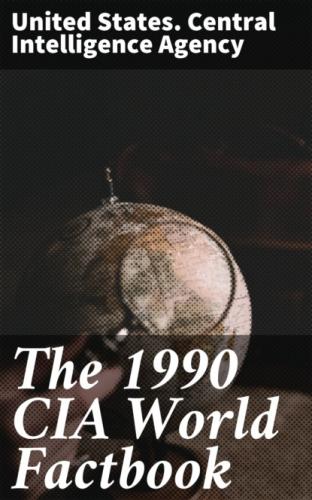European, 1.5% indigenous Indian and Eskimo
Religion: 46% Roman Catholic, 16% United Church, 10% Anglican
Language: English and French (both official)
Literacy: 99%
Labor force: 13,380,000; services 75%, manufacturing 14%, agriculture 4%, construction 3%, other 4% (1988)
Organized labor: 30.6% of labor force; 39.6% of nonagricultural paid workers
- Government
Long-form name: none
Type: confederation with parliamentary democracy
Capital: Ottawa
Administrative divisions: 10 provinces and 2 territories*; Alberta,
British Columbia, Manitoba, New Brunswick, Newfoundland,
Northwest Territories*, Nova Scotia, Ontario, Prince Edward Island,
Quebec, Saskatchewan, Yukon Territory*
Independence: 1 July 1867 (from UK)
Constitution: amended British North America Act 1867 patriated to
Canada 17 April 1982; charter of rights and unwritten customs
Legal system: based on English common law, except in Quebec, where civil law system based on French law prevails; accepts compulsory ICJ jurisdiction, with reservations
National holiday: Canada Day, 1 July (1867)
Executive branch: British monarch, governor general, prime minister, deputy prime minister, Cabinet
Legislative branch: bicameral Parliament consists of an upper house or Senate and a lower house or House of Commons
Judicial branch: Supreme Court
Leaders: Chief of State—Queen ELIZABETH II (since 6 February 1952), represented by Governor General Raymond John HNATSHYN (since 29 January 1990);
Head of Government—Prime Minister (Martin) Brian MULRONEY (since 4 September 1984); Deputy Prime Minister Donald Frank MAZANKOWSKI (since NA June 1986)
Political parties and leaders: Progressive Conservative, Brian Mulroney;
Liberal, John Turner; New Democratic, Audrey McLaughlin
Suffrage: universal at age 18
Elections: House of Commons—last held 21 November 1988 (next to be held by November 1993); results—Progressive Conservative 43.0%, Liberal 32%, New Democratic Party 20%, other 5%; seats—(295 total) Progressive Conservative 170, Liberal 82, New Democratic Party 43
Communists: 3,000
Member of: ADB, CCC, Colombo Plan, Commonwealth, DAC, FAO, GATT, IAEA,
IBRD, ICAO, ICES, ICO, IDA, IDB—Inter-American Development Bank, IEA,
IFAD, IFC, IHO, ILO, ILZSG, IMF, IMO, INTELSAT, INTERPOL, IPU, ISO, ITC,
ITU, IWC—International Whaling Commission, IWC—International Wheat
Council, NATO, OAS, OECD, PAHO, UN, UNCTAD, UNESCO, UPU, WHO, WIPO, WMO,
WSG
Diplomatic representation: Ambassador Derek BURNEY; Chancery at 1746 Massachusetts Avenue NW, Washington DC 20036; telephone (202) 785–1400; there are Canadian Consulates General in Atlanta, Boston, Buffalo, Chicago, Cleveland, Dallas, Detroit, Los Angeles, Minneapolis, New York, Philadelphia, San Francisco, and Seattle; US—Ambassador Edward N. NEY; Embassy at 100 Wellington Street, K1P 5T1, Ottawa (mailing address is P. O. Box 5000, Ogdensburg, NY 13669); telephone (613) 238–5335; there are US Consulates General in Calgary, Halifax, Montreal, Quebec, Toronto, and Vancouver
Flag: three vertical bands of red (hoist side), white (double width, square), and red with a red maple leaf centered in the white band
- Economy Overview: As an affluent, high-tech industrial society, Canada today closely resembles the US in per capita output, market-oriented economic system, and pattern of production. Since World War II the impressive growth of the manufacturing, mining, and service sectors has transformed the nation from a largely rural economy into one primarily industrial and urban. In the 1980s Canada registered one of the highest rates of growth among the OECD nations, averaging about 4%. With its great natural resources, skilled labor force, and modern capital plant, Canada has excellent economic prospects. In mid-1990, however, the long-simmering problems between English- and French-speaking areas became so acute that observers spoke openly of a possible split in the confederation; foreign investors were becoming edgy.
GDP: $513.6 billion, per capita $19,600; real growth rate 2.9% (1989 est.)
Inflation rate (consumer prices): 5.0% (1989)
Unemployment rate: 7.5% (1989)
Budget: revenues $79.2 billion; expenditures $102.0 billion, including capital expenditures of $1.8 billion (FY88 est.)
Exports: $127.2 billion (f.o.b., 1989); commodities—newsprint, wood pulp, timber, grain, crude petroleum, natural gas, ferrous and nonferrous ores, motor vehicles; partners—US, Japan, UK, FRG, other EC, USSR
Imports: $116.5 billion (c.i.f., 1989); commodities—processed foods, beverages, crude petroleum, chemicals, industrial machinery, motor vehicles, durable consumer goods, electronic computers; partners—US, Japan, UK, FRG, other EC, Taiwan, South Korea, Mexico
External debt: $247 billion (1987)
Industrial production: growth rate 2.3% (1989)
Electricity: 103,746,000 kW capacity; 472,580 million kWh produced, 17,960 kWh per capita (1989)
Industries: processed and unprocessed minerals, food products, wood and paper products, transportation equipment, chemicals, fish products, petroleum and natural gas
Agriculture: accounts for 3% of GDP; one of the world's major producers and exporters of grain (wheat and barley); key source of US agricultural imports; large forest resources cover 35% of total land area; commercial fisheries provide annual catch of 1.5 million metric tons, of which 75% is exported
Illicit drugs: illicit producer of cannabis for the domestic drug market
Aid: donor—ODA and OOF commitments (1970–87), $2.2 billion
Currency: Canadian dollar (plural—dollars); 1 Canadian dollar
(Can$) = 100 cents
Exchange rates: Canadian dollars (Can$) per US$1—1.1714 (January 1990), 1.1840 (1989), 1.2307 (1988), 1.3260 (1987), 1.3895 (1986), 1.3655 (1985)
Fiscal year: 1 April-31 March
- Communications Railroads: 80,095 km total; 79,917 km 1.435-meter standard gauge (includes 129 km electrified); 178 km 0.915-meter narrow gauge (mostly unused); two major transcontinental freight railway systems—Canadian National (government owned) and Canadian Pacific Railway; passenger service—VIA (government operated)
Highways: 884,272 km total; 712,936 km surfaced (250,023 km paved), 171,336 km earth
Inland waterways: 3,000 km, including St. Lawrence Seaway
Pipelines: oil, 23,564 km total crude and refined; natural gas, 74,980 km
Ports: Halifax, Montreal, Quebec, Saint John (New Brunswick),
St. John's (Newfoundland), Toronto, Vancouver
Merchant marine: 78 ships (1,000 GRT or over) totaling 555,749 GRT/774,914 DWT; includes 1 passenger, 5 short-sea passenger, 2 passenger-cargo, 12 cargo, 2 railcar carrier, 1 refrigerated cargo, 8 roll-on/roll-off, 1 container, 29 petroleum, oils, and lubricants (POL) tanker, 6 chemical tanker, 1 specialized tanker, 10 bulk; note—does not include ships used exclusively in the Great Lakes ships
Civil air: 636 major transport aircraft; Air Canada is the major carrier
Airports: 1,359 total, 1,117 usable; 442 with permanent-surface runways;
